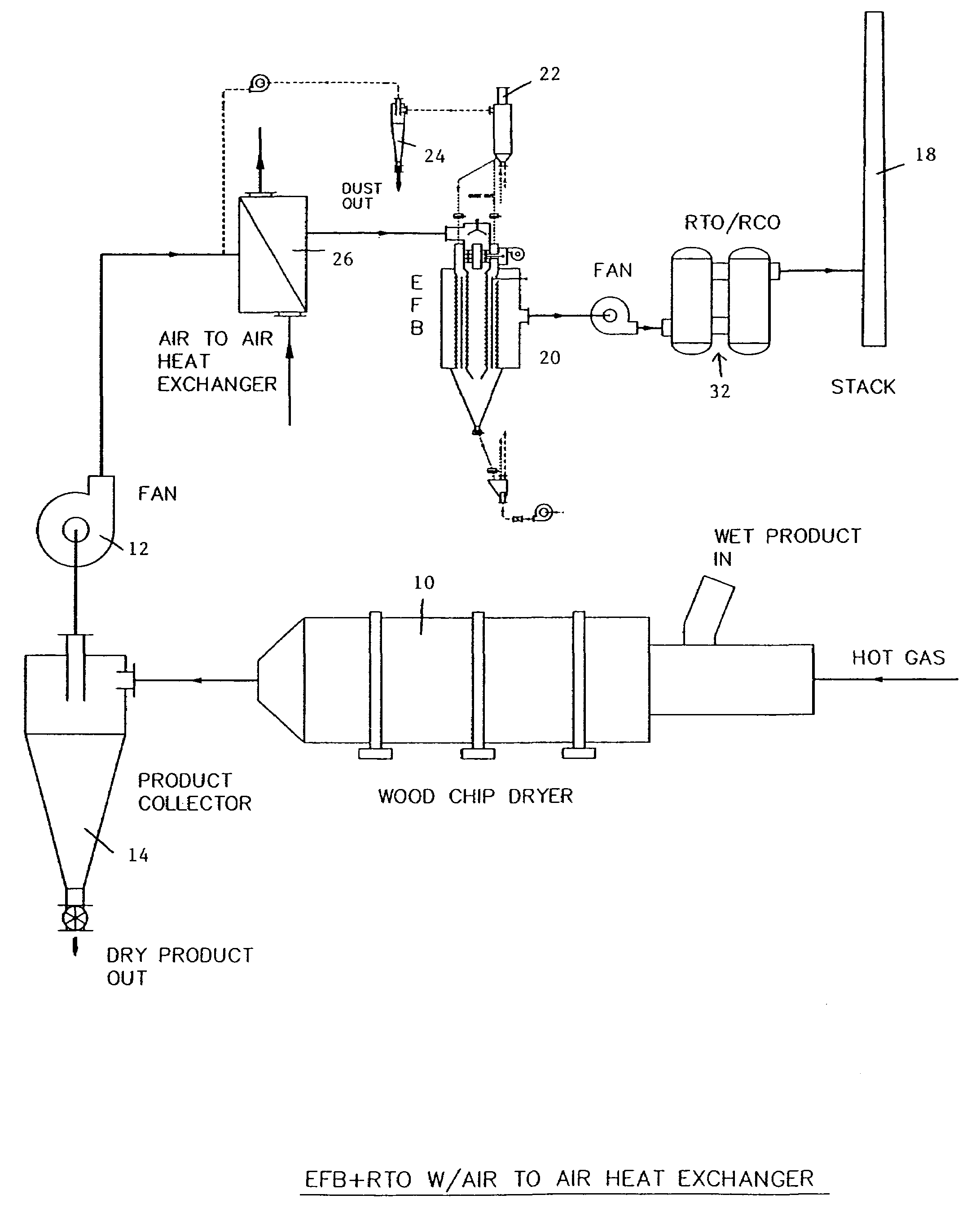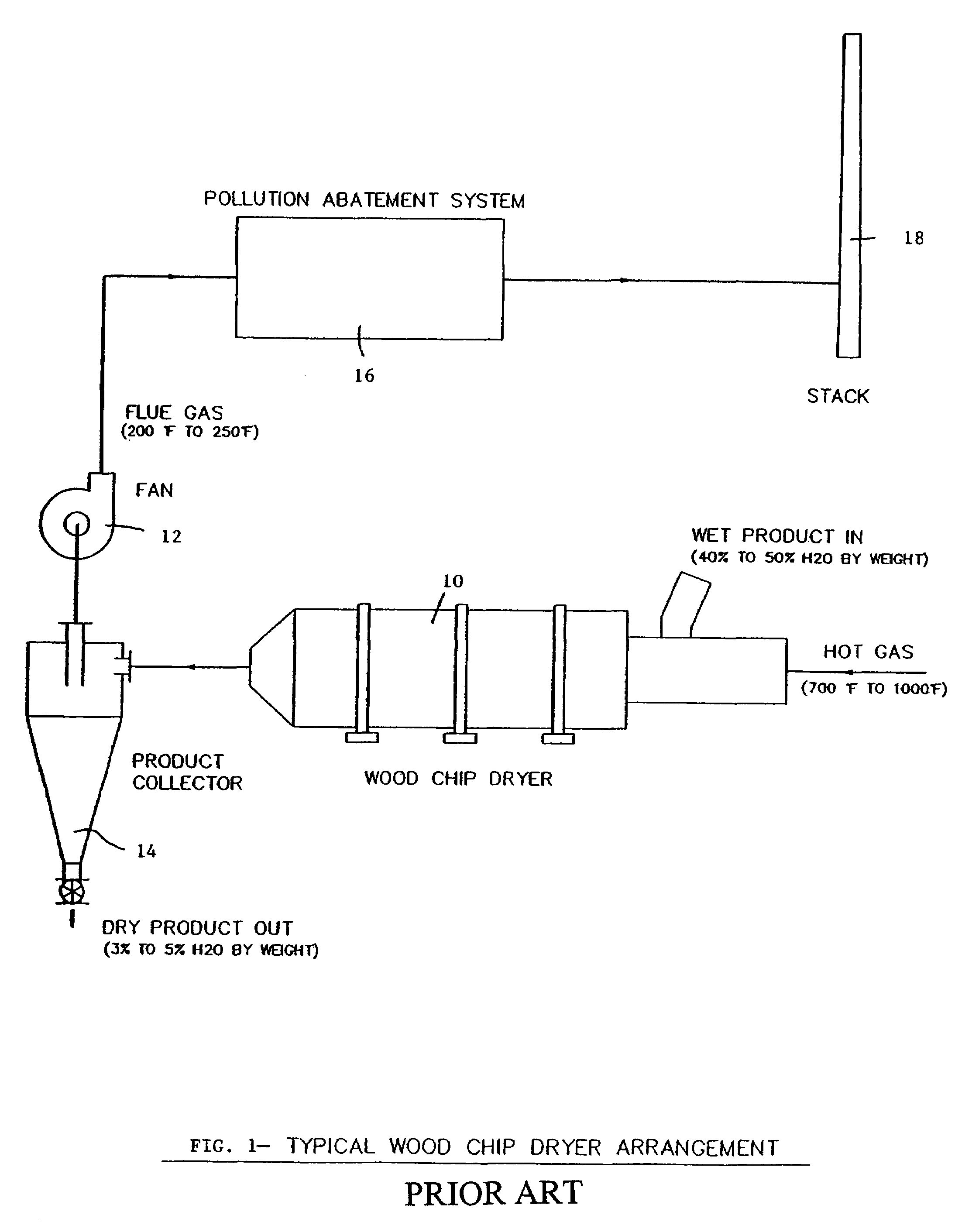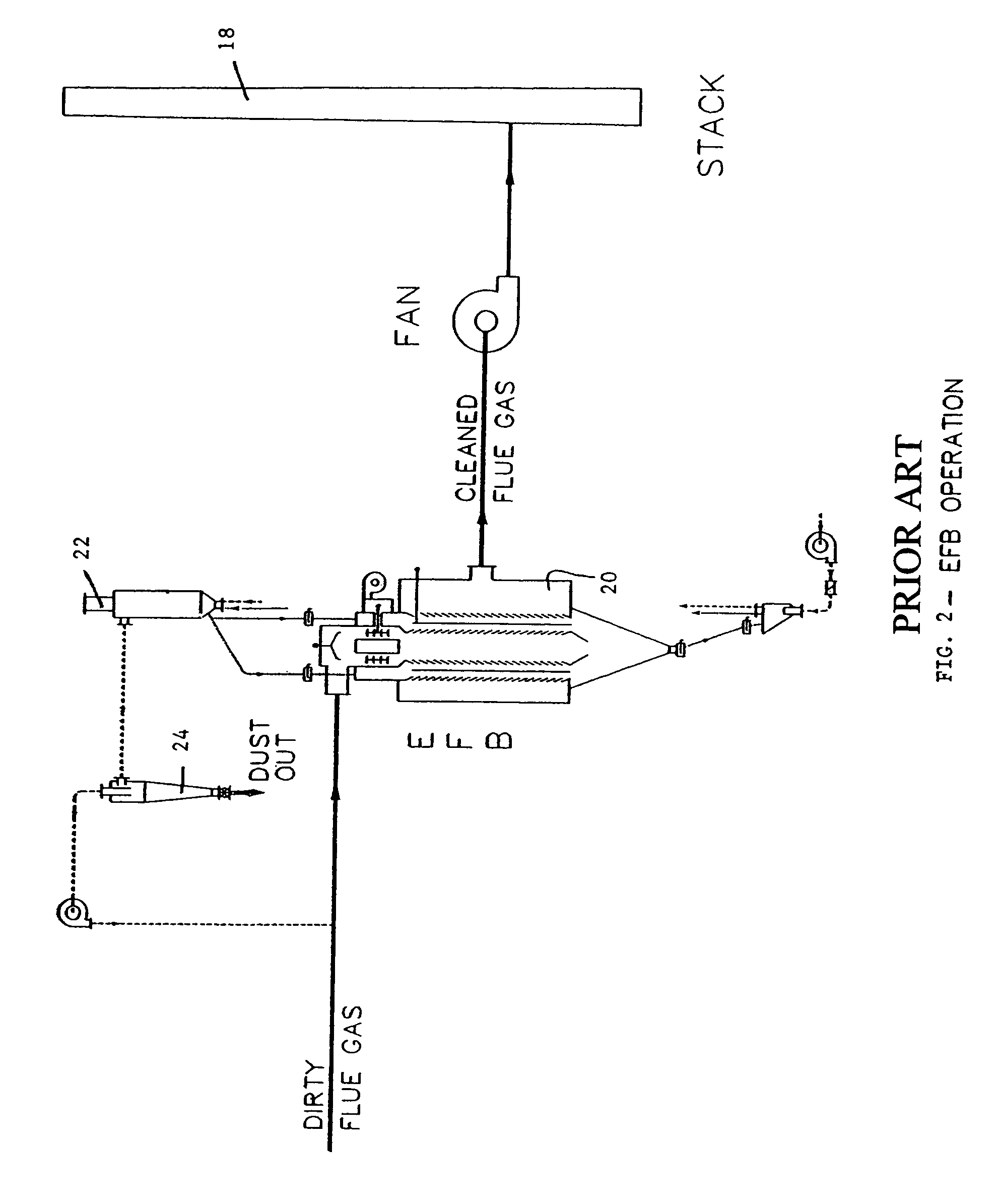Apparatus and method using an electrified filter bed for removal of pollutants from a flue gas stream
a technology of electrified filter bed and flue gas stream, which is applied in the direction of electrostatic separation, chemistry apparatus and processes, solid separation, etc., can solve the problems of generating large voc emissions, affecting the effect of voc emission reduction, and fine fly ash in the flue gas, so as to avoid pollution control problems
- Summary
- Abstract
- Description
- Claims
- Application Information
AI Technical Summary
Benefits of technology
Problems solved by technology
Method used
Image
Examples
Embodiment Construction
[0027]In a wood chip dryer arrangement, such as that shown in FIG. 1, for example, an EFB unit is used as part of a pollution abatement system.
[0028]To prevent gravel in the EFB unit from becoming sticky, the invention uses a reheating step ahead of the EFB to boost the gases to a high enough temperature to re-evaporate organics into a gaseous state as well as preventing condensation of some organics without affecting solid particles. The flue gas reheat can be accomplished, for example (without limitation), by utilizing a heat exchanger, such as an air-to-air heat exchanger 26 shown in FIG. 3, or an air / liquid indirect heat exchanger 28 shown in FIG. 4, or by directly mixing the flue gases with another hot gas stream in a direct hot gas mix chamber 30, as shown in FIG. 5. In all of these embodiments, the flue gas containing solid particles (fly ash and wood fines) and VOCs is heated to a temperature such that only solid particulates are present in the gas stream, with all the other...
PUM
 Login to View More
Login to View More Abstract
Description
Claims
Application Information
 Login to View More
Login to View More - R&D
- Intellectual Property
- Life Sciences
- Materials
- Tech Scout
- Unparalleled Data Quality
- Higher Quality Content
- 60% Fewer Hallucinations
Browse by: Latest US Patents, China's latest patents, Technical Efficacy Thesaurus, Application Domain, Technology Topic, Popular Technical Reports.
© 2025 PatSnap. All rights reserved.Legal|Privacy policy|Modern Slavery Act Transparency Statement|Sitemap|About US| Contact US: help@patsnap.com



